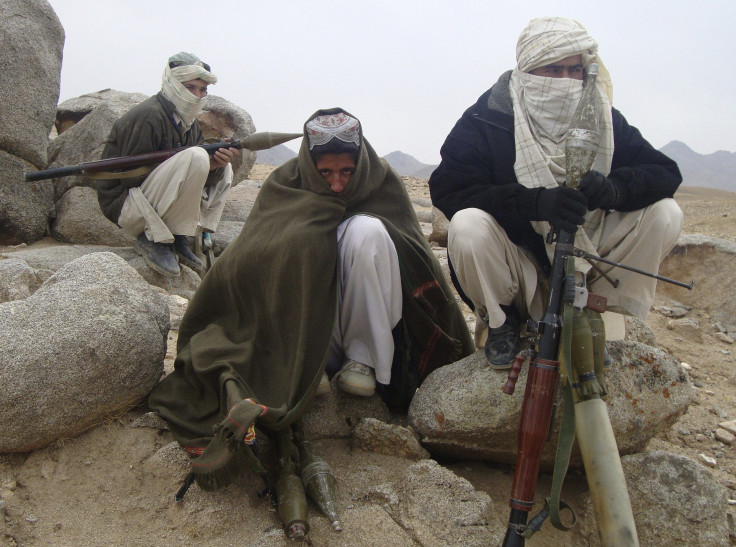Taliban Resurgent As 13-Year War In Afghanistan Nears End

As the Afghan military begins its first day in charge of combat operations in the region of Helmand province Monday, a resurgent and strengthened Taliban continues to gain control of key regions, including districts just outside of the nation's capital, Kabul. The handover and loss of territory comes at a difficult time for the country’s military, as the Taliban has inflicted the deadliest period for Afghan forces since the war began, underlining the enormity of the task at hand and raising questions about how the jihadist group has changed over the past 13 years of war and where it stands now.
“They remain a formidable fighting force and are conducting increasingly brazen operations across the country,” said Lisa Curtis, a senior research fellow and expert on Afghanistan at Washington, D.C., think tank The Heritage Foundation. “Over the last 13 years, they really have developed into a sophisticated force and have shown an ability to study U.S. and NATO strategy, patterns and found ways to continue attacks under different constraints.”
British forces handed over Camp Bastion Sunday, marking an official end to combat operations by British troops. The adjoining U.S. Marines Camp Leatherneck was also handed over in a ceremony with Afghan troops.
While Afghan security forces remain in control over most of the country, the summer months offered a glimpse of what may lie ahead. Previously secure regions descended into chaos, and trouble spots, particularly the province of Helmand, have been extremely violent.
The insurgency has been in operation since June 2013, just a year after the U.S. withdrew the surge troops and continued to draw down its military footprint, handing over operations to Afghan security forces who assumed full control in mid-2013. In that year, however, there were 8,615 civilian injuries and deaths, a 14 percent rise over 2012 and the deadliest since records were kept in 2009, according to a report from the United Nations Assistance Mission in Afghanistan.
The group reports that most of those deaths were directly attributed to the insurgency and that it directly targeted civilians and used indiscriminate tactics or IEDs.
Curtis says that the surge forced many Taliban fighters to take refuge in neighboring Pakistan, where they could rest, rearm and adjust strategy. “And they are very patient,” said Curtis. “When we saw U.S. forces in 2009 and 2010, they [Taliban] would fall away from certain areas because they knew their limits. But now that U.S. and coalition forces are departing, I think there is a real danger of them being able to hold more and more territory.”
But what has been harder to broach is to what extent the Taliban is recapturing parts of Afghanistan. The U.N. reported in mid-2014 that the Taliban was in full control of four districts (out of a possible 373) but had reached a ceasefire with Afghan forces in some towns, allowing the Taliban some level of authority and the ability to implement its own rules, schools, courts and general way of life. The U.N. report suggested that around 40 percent of all towns and cities in the country have a “raised” or “high” threat level from the Taliban.
Other reports suggest that the Taliban is in charge of smaller areas that surround government towns, similar in tactic to what ISIS is doing in Syria and parts of Iraq, but the important difference with the Taliban is that by focusing on rural parts outside major cities, it is taking charge of the poppy fields and the lucrative drug trade. The income helps pay for weapons and training. This year’s poppy harvest was the most lucrative since records were kept. The Islamic State group made similar moves to secure the oilfields when it began its own insurgency.
But it’s not just income from drugs that fuel the Taliban.
“The other even more worrisome dimension is the external finance,” said Ariel Cohen, director of the Center for Energy, Natural Resources and Geopolitics at the Institute for Analysis of Global Security. “Whether it’s coming from IS, the Gulf, we did not manage, on an intelligence level, to dry their sources of funding.”
While there are fears that Afghanistan could descend into the same sort of violence from insurgents as Iraq, the concern is cushioned by the security agreement that will mean 10,000 U.S. troops will remain in the country after combat operations end at the end of the year. When the final troops left Iraq in 2011, Sunni insurgents took large swaths of the country after unleashing levels of violence that have not been seen since the end of the civil war a few years ago.
There had been peace talks between the Taliban and the Afghan government, but those were unsuccessful after it became clear that U.S. forces were withdrawing, potentially disincentivizing the Taliban to negotiate.
The U.N. has said that the Taliban and Afghan forces are at a military stalemate. Other analyses are far from optimistic about the Afghan government's ability to hold its territory. The International Crisis Group reports that insurgents are increasingly confident as "ongoing withdrawals of international soldiers have generally coincided with a deterioration of Kabul's reach in outlying districts."
The Pentagon believes that the Taliban will pick up momentum in 2015 as it seeks to take back the country.
© Copyright IBTimes 2025. All rights reserved.




















